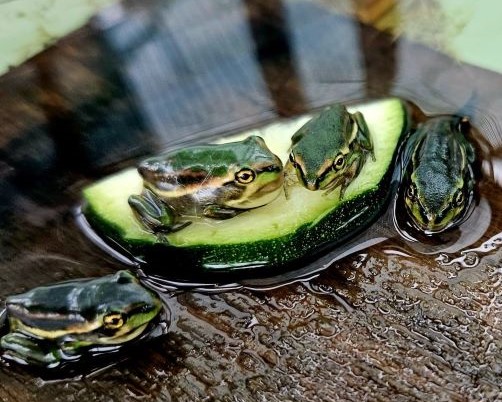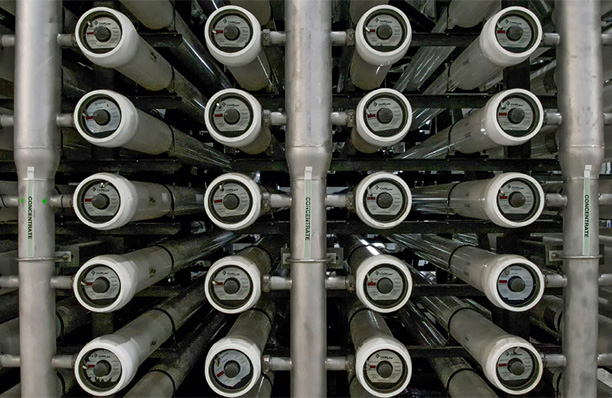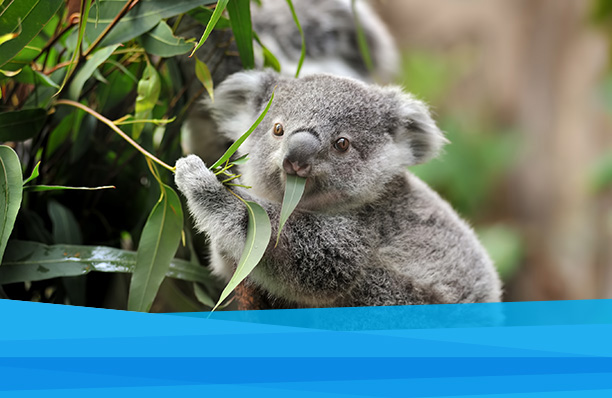Sydney Desalination Plant helps bring endangered Green and Golden Bell frogs after 30 years - May 28, 2023

The Sydney Desalination Plant (SDP) on the Kurnell Peninsula is the new home for hundreds of endangered green and golden bell frogs (Litoria aurea) – nearly three decades after they were last spotted in the area.
More than 1,000 tadpoles have been introduced to the Plant’s site, which includes a 15-hectare Conservation Area that connects to Kamay Botany Bay National Park.
The tadpoles were produced as part of an overarching breed-to-release program that was planned and developed based on scientific advice from Dr Arthur White. The program is carried out in partnership with Symbio Wildlife Park at Helensburgh, and Veolia, which operates SDP.
The program aims to reintroduce the believed to be geographically extinct native species to the Kurnell Peninsula where they were once common and forms an important part of SDP’s environmental conservation work.
Veolia and Symbio will be responsible for the day-to-day care of the tadpoles and young frogs, which are being monitored to help assess the re-created habitat and will provide regular reports on the frogs to the NSW Government Local Land Services, which has provided a grant to assist with the program.
Veolia staff built special tadpole 'nurseries' that include tanks filled with freshwater and saltwater. The freshwater tanks allow the tadpoles to grow in their infancy, while the saltwater tanks are designed to protect adolescent frogs by reducing the risk of disease.
Once the tadpoles mature into frogs, it is intended that they will use the Plant’s 15-hectare Conservation Area to establish a breeding colony and help repopulate the peninsula.
SDP’s Chief Executive Philip Narezzi said the Plant is proud to support this important initiative to reintroduce the species to Sydney’s Kurnell Peninsula.
“Green and golden bell frogs used to frequent the area, but they haven’t been spotted in decades,” he said.
“We believe that this collaboration will not only make a meaningful contribution to the conservation of the green and golden bell frog but raise awareness about this species and the importance of preserving our natural habitats.
"As a key member of the local community, we are committed to protecting the environment and the wildlife that call it home.”
Daniel Spiller, Veolia’s Chief Operation Officer for Water, said the initiative highlights the ongoing commitment to promoting environmental sustainability and protecting biodiversity.
"Green and golden bell frogs are an iconic species that are integral to the health of our local ecosystems,” he said.
“This collaboration is an exciting step forward in their rehabilitation and a great example of how we bring about sustainability, environmental and ecological improvements at the same time.”
Managing Director of Symbio Wildlife Park Matt Radnidge said: "The green and golden bell frog was the first species ever listed as threatened in NSW. Ironically enough, it was also the first frog encountered on arrival at Botany Bay in 1770 by Captain James Cook’s party.
“When they first landed in Botany Bay and went in search of water, they discovered a vivid green and gold coloured frog – what we now know as the green and golden bell frog.
“They have a rich history that is intrinsically linked to our region, and that’s why it’s crucial that we partner with organisations like the Sydney Desalination Plant to safeguard the future of this iconic Australian species.
“We look forward to seeing first-hand the positive impact this program will have on the local ecosystem.”
FAST FACTS
● The green and golden bell frog was the first species listed as threatened in NSW.
● The species was the first frog encountered on arrival at Botany Bay in 1770 by Captain James Cook’s party.
● Green and golden bell frogs were last spotted on the Kurnell Peninsula 28 years ago.
● The species was once common to the Kurnell Peninsula, but the populations have declined due to habitat loss, disease and predation by introduced species.
● The tadpole breeding program comes less than a year after 800 native eucalypt trees were planted on the SDP site to help feed a colony of koalas at Symbio Wildlife Park.
For further details contact:
Aileen Bodart
Cannings Strategic Communications
M: 0432 160 136
E: aileen.bodart@canningscomms.com
Kevin Fallon
Symbio Wildlife Park
MOBILE: 0431 588 862
EMAIL: kevin@symbiozoo.com.au

















